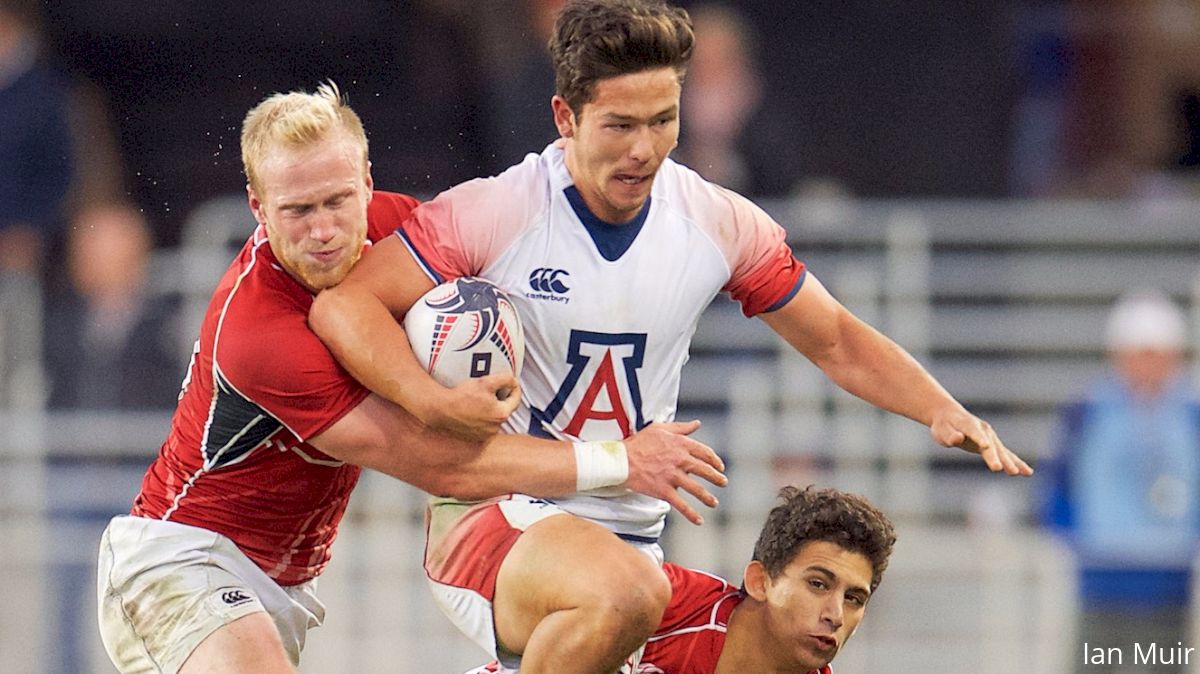Your Team's Too Good, Get Out: The Division Debate
Your Team's Too Good, Get Out: The Division Debate
Alex Goff looks at aspects of the debate on whether a college program should be forced into moving up if it's good. This is Part 1.

Whenever it's time for the college rugby playoffs to get underway, you hear grumblings.
Those complaints, of course, are not about the squads that did poorly — everyone’s happy to beat them — instead they are about the teams that did well. It’s been going on for a long time and usually can be paraphrased as “that college team is too good and has certain advantages my team does not; that team should move up a division (and out of mine).”
As much as you might think this is new — an aftershock of the development of varsity men’s college programs — it isn’t. Back in the dark ages of the first decade of the 2000s, Cal ruled the college roost with only the occasional challenger, and there were repeated calls for the Bears to play in the Super League (which, for younger readers, ran from 1997 to 2012). Of course, the answer to that was not “kick out Cal” but “everyone else should play better.”
So they did. BYU was the first to elevate its program, and then Saint Mary’s, Life, and others started to come through.
Legit Complaints?
But there was also an understandable complaint in various circles about which level varsity programs should play. When Lindenwood first became varsity, its coaching staff decided to play in D2 and to do so with a large contingent of overseas students. Not surprisingly, the Lions rolled through the division, and at least one opposing coach was visible upset — not at losing, per se, but due to his belief that Lindenwood should have started in D1AA at minimum.
The Lions bounced up to D1AA the next year (and the team Lindenwood beat in the 2012 D2 final, Salisbury, won it all in 2013). In the spring of 2013, the Lions made the D1AA final, losing to club program Central Florida.
An Informal Plan?
Since then, the progression pathway, however informal, seems to be set. You go varsity (or quasi-varsity), especially if you’re new, and you start small and move your way up. This is the model that Notre Dame College, Mount St. Mary’s, and Davenport all followed.
But when you start small with an eye to moving up, you still ruffle feathers. Longtime D2 teams look at you and see a varsity or school-supported program and conclude you have an advantage — an advantage that should put you in D1.
And D1AA teams start to crunch the numbers at the desk after crunching the bodies on the field and see the dichotomy behind the scenes: We’re a club sport. You are a non-varsity, school-supported team. This matchup is unfair.
It's Not New, But It Is
And while the complaints that strong teams should move up a level just because they're good at rugby are far from a recent development, the current environment is new and evolving. When we talk about college rugby with those outside the sport, we inevitably get into the discussion that "it's a club sport, but some teams are varsity, right?"
Well, that is one of the major issues we'll soon address. But we all know there's more to it than just "club" and "varsity."
Some club teams work under campus rules that say students have to do all the administrative and logistical work. An outside can coach, but that coach should have no operational input or contact with the school.
Some club teams answer to their schools' recreation and activities administrations, while others answer to someone in their athletic departments.
The BYU rugby team is a club, but to get to club status at that university takes time and effort — and it's an exclusive... err... group. Those teams get significant funding from the school.
Some other programs get labeled something else: intercollegiate sports club or elevated club or something. These levels recognize that the rugby team is not varsity (and probably never will be) but still represents the school in a demanding sport.
Some programs we consider varsity aren't actually officially varsity. The kit and travel is paid for and the coach is paid, but technically they are still non-varsity sports.
Some varsity programs have a paid coach who receives very little compensation and a support travel budget that is much less than you'd expect. It's not like the funds are unlimited.
All Addressed In Good Time
So of course there’s more to the story than whether a team’s schedule shows up on the athletic department website or whether a team went undefeated this year. There are aspects of funding, school size, and even geography to consider.
And we’ll consider them all, in part two, coming up.